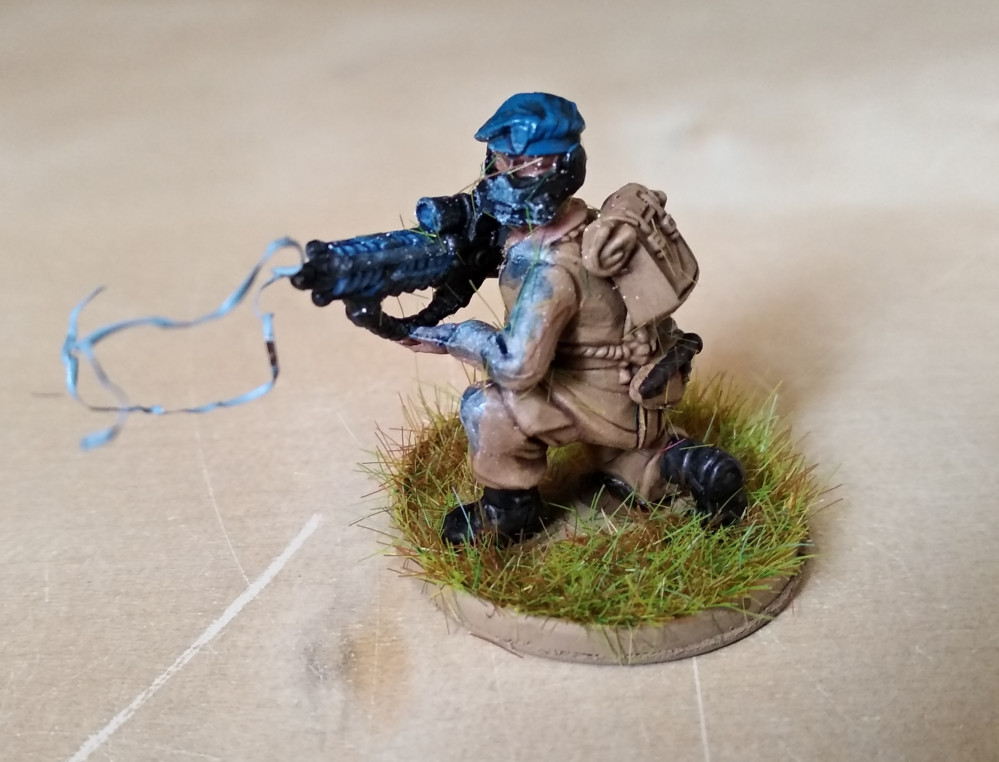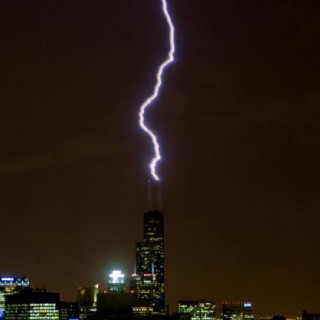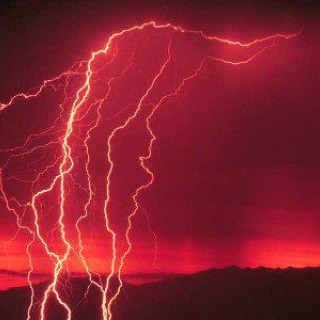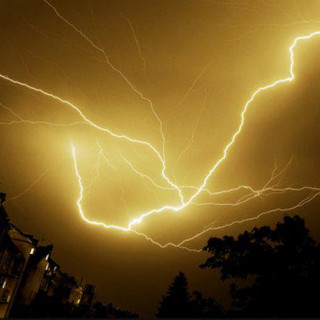
K47 Grenadier Sections with lightning effect
The colour of lightning
Before I began I did some research into lightning so that I could establish what my lightning should look like. Fulminology (the study of lightning) tells us that the colour that we see when lightning occurs in nature is based on two things, the environment in which the lightning is generated and the weather between the lightning and the viewer. Since the lightning on our models is being viewed up close I’m going to ignore the intervening weather aspect of the colour.
Lightning is a massive discharge of electricity. This sudden discharge raises the temperature along the path of the lightning to a massive 30,000 degrees Kelvin (the surface of the sun is only 5,000 Kelvin). This causes all the atoms along the lightning’s path to get excited and gain energy, when they relax and loose this energy they give off light which is characteristic of the atom (a process called incandescence).
The atmosphere is mostly formed from nitrogen, which emits a blue-white light; therefore “pure” lightning bolts are blue-white. But if other atoms or particles are present in abundance then they can change the colour of the lightning.
Water contains lots of hydrogen which gives off red light, so if the lightning occurs where there is lots of water vapour in the air the lightning can be red, pink, or purple depending on how strongly the red mixes with the blue-white.
Similarly dust in the air produces a yellow light, so the lightning can end up being anywhere from yellow to orange or pale green. So even naturally occurring lightning can have a wide range of colours. When we enter a sci-fi or fantasy setting any colour is reasonable.
As my force is based on the British 8th Army fighting in Italy the climate is temperate and I have chosen to go with a blue lightning effect.

































![TerrainFest 2024! Build Terrain With OnTableTop & Win A £300 Prize [Extended!]](https://images.beastsofwar.com/2024/10/TerrainFEST-2024-Social-Media-Post-Square-225-127.jpg)











































Leave a Reply